Last Updated: 26 September 2025
Pot-Limit Omaha vs Texas Holdem: All Differences Explained
Contrasts run deep when comparing Omaha vs Texas Hold’em. In this guide, we’ll unpack PLO vs Hold’em gameplay and strategy, showing why each game demands different skills and helping you to decide which poker game suits you best.
Guides
Pot-Limit Omaha vs Texas Holdem: Comparing How They Work
There are obvious similarities when looking at Pot Limit Omaha vs Texas Hold’em. The basics of each poker game overlap in some areas, but the rules, betting, and strategies are very different beasts.

Rules of Pot-Limit Omaha vs Texas Holdem
Both games play the same way at their core: Players post blind bets, receive hole cards, and build a poker hand. Those similarities aside, the rules of each game have notable differences that you must understand to play either one successfully.
Rules shared by Pot-Limit Omaha and Texas Holdem:
| Aspect | Both Games |
| Community cards | Flop, turn, river |
| Betting rounds | Preflop, flop, turn, river |
| Hand rankings | From high card to royal flush |
Main rules differences of Pot-Limit Omaha vs Texas Holdem:
| Aspect | Texas Hold’em | Pot-Limit Omaha |
| Hole cards | 2 | 4 |
| Building a hand | Any combo of hole cards + board | Exactly 2 hole cards + 3 board |
| Betting structure | No-limit | Pot-limit |
Players familiar with No-limit Hold’em betting while using any hole and community cards must adjust to Omaha’s extra hole cards, pot-limit format, and strict card usage rules. Our Texas Hold’em beginners’ guide and Pot Limit Omaha for beginners page have more on getting started with the rules of both variants.
Gameplay of Pot-Limit Omaha vs Texas Holdem
The gameplay of Pot-Limit Omaha versus Texas Hold ’em has noticeable differences from the outset.
Hold’em tends to stimulate a faster pace, as players quickly recognise the hands they hold or are drawing to. With more cards, Omaha brings greater consideration to holdings and possible outcomes, making for a complex game. Other aspects, such as bluffing and bet-sizing tells, can also be strikingly different:
| Aspect | Hold’em | Pot-Limit Omaha |
| Pace | Fast | Moderate |
| Hand combos | Fewer | Many |
| Bluffing | More frequent | Less common |
| Bet-sizing tells | Clearer | Harder to read |
Pot-Limit Omaha vs Texas Holdem: Comparing Strategy
The strategy between Pot-Limit Omaha vs Texas Holdem grows as you learn poker strategies. Everything from starting hands to calculating odds requires a different approach. This section briefly compares the similarities and differences in strategies for both games.
Starting Hand Selection
Both games usually reward disciplined play, and that begins with starting hand selections. Knowing poker hand ranges start you on the right path in both formats.
Similarities between PLO and Hold’em starting hand selection:
- Position expands your playable range
- Premium hands give the biggest edge
- Unconnected cards should be folded
Differences between PLO and Hold’em starting hand selection:
| Hold’em | Pot-Limit Omaha |
| Big pairs like AA and KK dominate | Double-suited and connected hands are strong |
| Suited connectors offer solid playability | Connectivity and suitedness matter most |
| Small pairs are playable in position | Weak pairs are mostly unplayable |
In Hold’em, the raw strength of hands like AA and KK crush the table in most situations, while speculative hands like suited connectors offer good playability.
In PLO, pairs carry less weight. Instead, connected cards that can make a straight, or suited holdings that can draw to a flush, are ideal.

Hand Strength
Hand strengths are different once the community cards are dealt. What can be a strong hand in Hold’em can easily slip down the strength ladder in Omaha.
Similarities between PLO and Hold’em hand strength:
- A pair alone rarely takes the pot at showdown
- Position increases the power of medium hands
- The nuts often drive heavy action
Differences between PLO and Hold’em:
| Hold’em | Pot-Limit Omaha |
| Top pair/top kicker is often strong | Top pair is weak by showdown |
| Overpairs hold high equity | Overpair strength fades quickly |
| Two pairs or trips can dominate | Two pair/trips are easily outdrawn |
In Hold’em, hands like a top pair with an ace kicker or an overpair can stay strong throughout. Meanwhile, the same holdings lose strength in Omaha, where board texture changes everything.
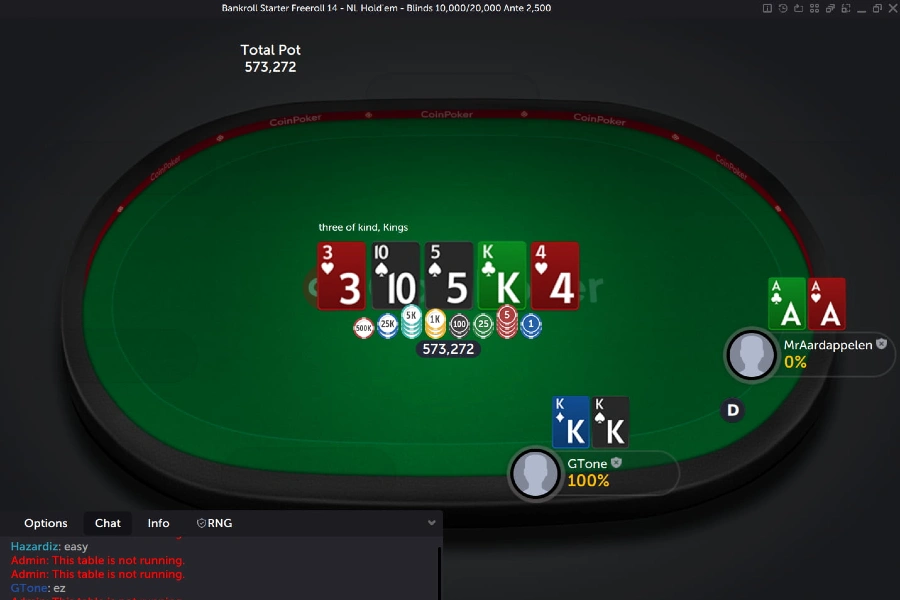
Betting
Bet sizing strategy separates the two poker favorites as much as hand strengths. No-limit and pot-limit formats create very different ways to bet strategically, but there are a few notable similarities.
Similarities between Pot-Limit Omaha and Hold’em hand strength:
- Position gives more leverage in betting
- Value bets extract chips from worse hands
- Continuation bets keep pressure on opponents
Differences between Pot-Limit Omaha and Hold’em hand strength:
| Hold’em | Pot-Limit Omaha |
| No-limit allows all-in shoves anytime | Pot-limit caps bets at the size of the pot |
| Overbetting is a common weapon | Overbets aren’t possible |
| Bluffing pressure tied to big bets | Betting smaller forces more postflop play |
In No-limit Hold’em, you can push all-in or move giant stacks into the pot at any stage. Bet-sizing in Omaha is more restrictive due to the pot-limit format. This creates bet-sizing strategies that differ pre-flop and post-flop for each game.
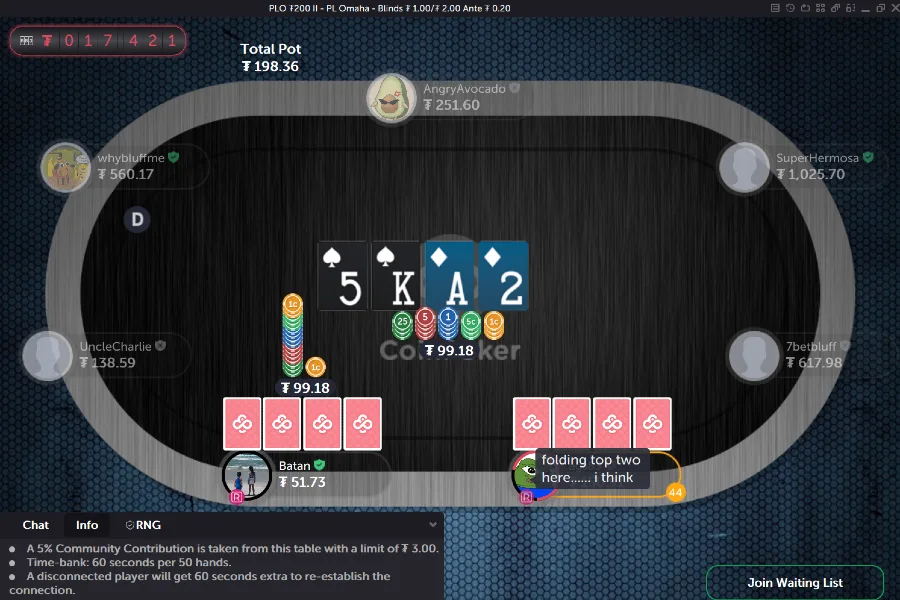
Drawing
Omaha distances itself from Hold’em greatly when it comes to drawing. The four hole cards of PLO create many more drawing possibilities than the two of NLH.
Similarities between drawing in PLO and Hold’em:
- Strong draws can win big pots
- Position affects the profitability of chasing draws
- Semi-bluffing with draws is common
Differences between drawing in PLO and Hold’em:
| Hold’em | Pot-Limit Omaha |
| Players usually focus on single draws | Players can often have multiple draws |
| Less likely to be drawing to the same combination as other players | More likely to be drawing to the same combination as other players |
| Drawing hands can justify aggressive bets | Draws to the nuts (best hands) are extremely valuable |
| Need a combination of draws for equity |
Drawing for hand combinations is much simpler in Hold’em. Most of the time, players are focused on singular combinations, like completing a flush draw. However, Omaha creates multiple draw possibilities for players, meaning you might be chasing a flush, a straight, and maybe even a full house at the same time.
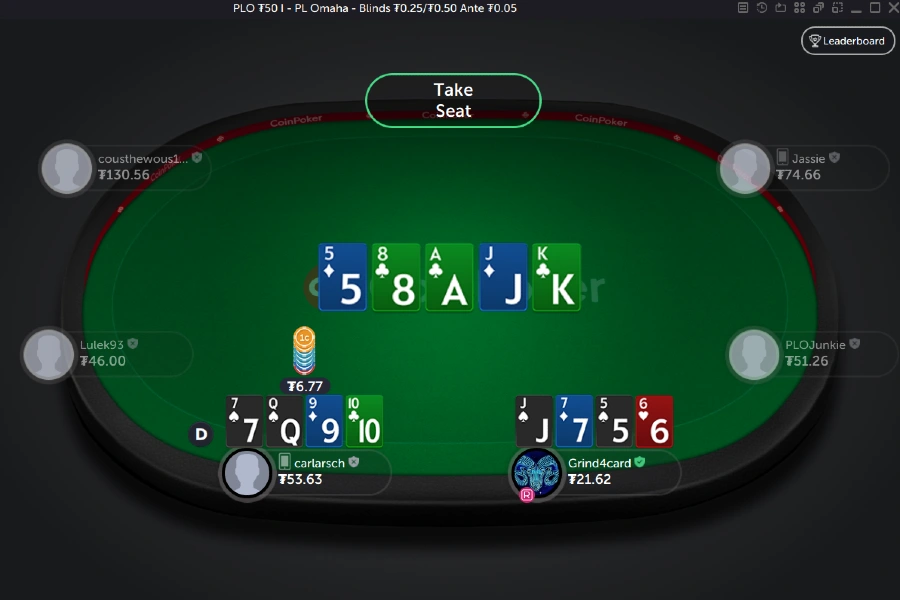
Bluffing
Bluffing in Hold’em and Omaha stems from the same basic principle: to win the pot with a weak hand. While bluffing strategies are similar in both games, some crucial differences exist.
Similarities between bluffing in PLO and Hold’em:
- Position improves bluffing success
- Representing strong hands can force folds
- Semi-bluffs with drawing potential are effective
Differences between bluffing in PLO and Hold’em:
| Hold’em | Pot-Limit Omaha |
|---|---|
| Big bets can make opponents fold marginal hands | Pots often go multiway, reducing fold equity |
| Overbet bluffs can pressure players | Overbet bluffs are impossible, and even pot sized bets are common |
| Bluffing is more frequent | Bluffing is less common due to draw-heavy boards |
Bluffing in Hold’em and Omaha has the same goal, but reaching it requires a different approach in each game. The heavy bets of NLH often don’t cut the mustard in PLO, where caution and timing are priorities to consider before selling a story to your opponents.
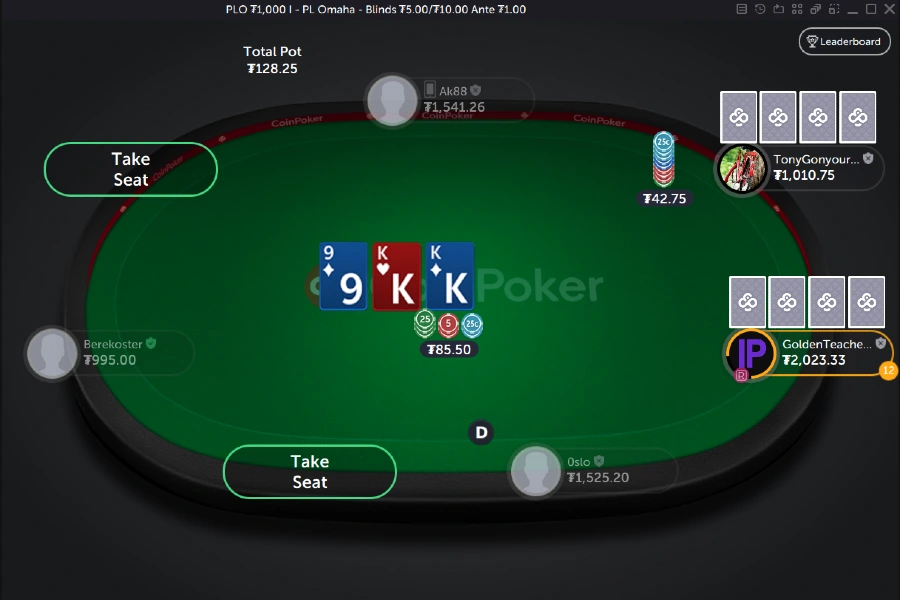
Odds
Math is an integral part of poker, and understanding odds can make the difference in both Hold’em and Omaha. Similarities exist, but PLO’s four hole cards can make calculations trickier.
Similarities between PLO and Hold’em odds:
- Pot odds guide calling decisions
- Implied odds affect the value of drawing hands
- Probability of hitting draws shapes strategy
Differences between PLO and Hold’em odds:
| Hold’em | Pot-Limit Omaha |
| Fewer card combinations make calculations simpler | More combinations increase complexity |
| One draw can often define the hand | Multiple draws change equity |
| Pot odds are easy to estimate | Pot odds can be more complex in multiway pots |
Calculating odds when drawing to hands in Hold’em is straightforward, where the math indicates the right decision. In Omaha, four hole cards create far more possible hands and draws, so odds can fluctuate dramatically. Plus, multi-way hands create even more odds-based decisions to consider in PLO.
Bankroll Size
Your bankroll should always be considered before selecting a game. PLO can create greater variance than NLH, so even if the blinds can be the same for each game, be sure your bankroll size can cope with the different poker formats.
Similarities between PLO and Hold’em bankroll size:
- Keep enough buy-ins to handle losing streaks
- Adjust stakes to your skill level
- Avoid risking more than you can afford
Differences between PLO and Hold’em bankroll size:
| Hold’em | Pot-Limit Omaha |
| Standard bankroll: 20-50 buy-ins for cash games | Standard bankroll: 30-100 buy-ins for cash games |
| Variance is lower, swings are smaller | Higher variance, bigger swings are common |
| Move up the stakes steadily | Move up more cautiously due to swings |
A solid bankroll protects against poker’s day-to-day swings. NLH and PLO create different levels of variance, so practice good bankroll management to cope with the losing days and step up the stakes carefully when times are good.
Pot-Limit Omaha vs Texas Holdem: Comparing Disciplines
By now, you’ve seen that NLH and PLO share many similarities and key differences. Just as a 100m and 1500m race are run on the same track, Texas Hold’em vs Omaha use the same poker foundation, yet demand different approaches. Cash games, multi-table tournaments, and live versus online play demand unique adjustments, too.
Cash Games
PLO and NLH Cash game players are rewarded by strong strategy-based play. However, long-term variance and game dynamics can differ significantly.
Similarities between PLO and Hold’em cash games:
- Position is key to long-term profitability
- Aggressive play can control pots and pressure opponents
- Understanding ranges improves decision-making
Differences between PLO and Hold’em cash games:
| Hold’em | Pot-Limit Omaha |
| Standard deep-stack play allows large bets and bluffs | Pot-limit structure encourages careful pot control |
| Single-handed aggression can dominate a table | Multiway pots often reduce fold equity and require caution |
| Lower variance makes bankroll swings more manageable | Higher variance demands more buy-ins and discipline |
Exploiting positional advantage in poker is a common theme, and the same is true in Hold’em and Omaha cash games.
However, the four-hole cards of PLO increase the likelihood of multiway action, making for more complex and “swingy” pots. Success in PLO cash games begins with solid hand selection, pot control, and enough buy-ins to handle variance.
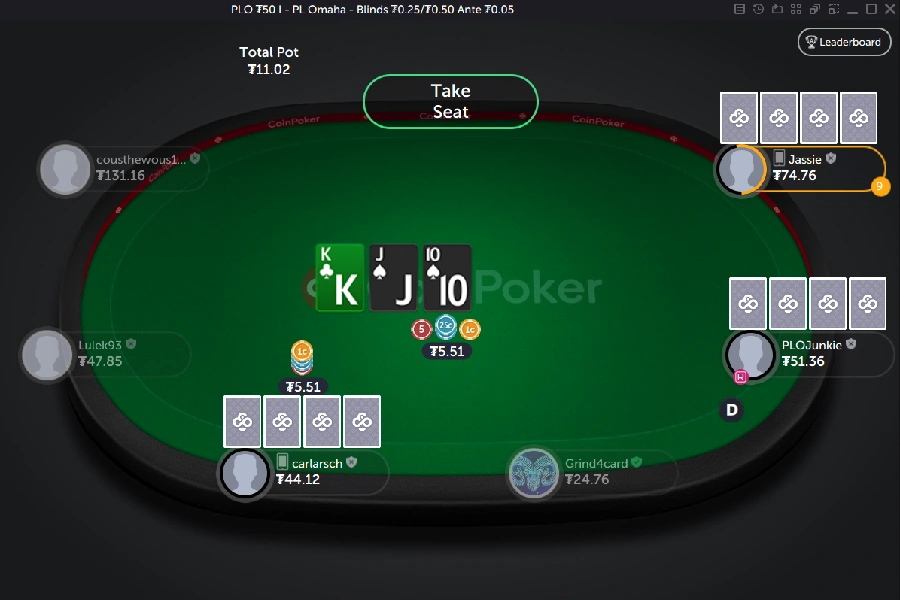
Tournaments
Tournament poker strategies reduce the pace of Hold’em and Omaha. Stack sizes, blinds, and survival shape decisions in MTTs.
Similarities between PLO and Hold’em tournaments:
- Early-stage play favors a tight, position-based strategy
- Aggression is rewarded to build or protect stacks
- Stack-to-pot ratios guide betting decisions
Differences between PLO and Hold’em tournaments:
| Hold’em | Pot-Limit Omaha |
| Smaller fields and fewer draws make aggressive moves more effective | Larger draws and multiway pots require careful risk assessment |
| Short stacks can push all-in with top pairs | Even strong hands must consider redraws and board texture |
| Deep stacks allow more maneuvering and postflop play | Deep stacks create bigger swings and require tighter hand selection |
Standard strategies like open-shoving and continuation betting are effective in Hold’em tournaments, while Omaha needs greater attention to multiway dynamics and potential redraws. Strong PLO tournament players aim for nut hands, careful pot control, and calculated aggression to survive and run deep.
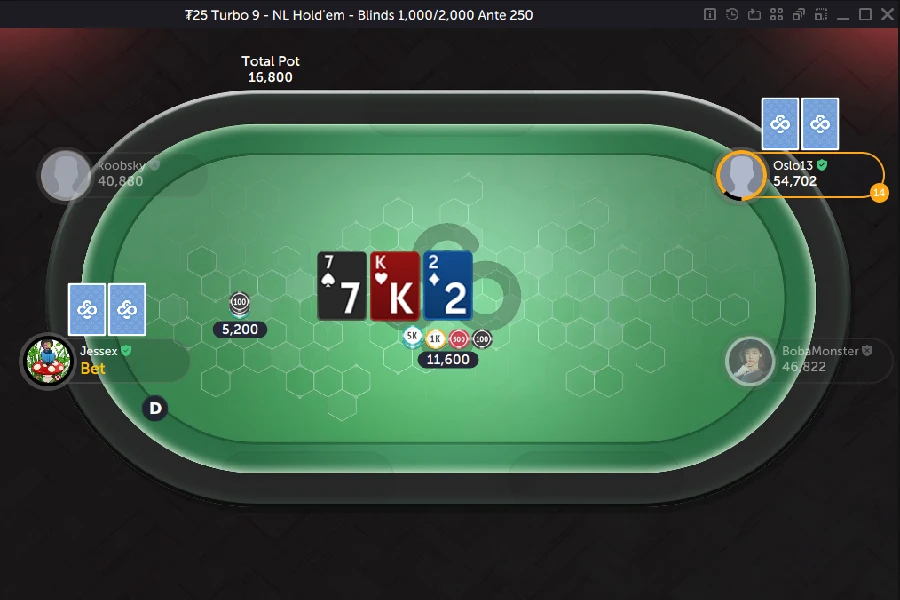
Player Traffic (Live & Online)
Popularity and game demand shape the player traffic in both live and online PLO and NLH games. Here’s how they compare.
Similarities between PLO and Hold’em player traffic:
- Staples for online poker rooms
- General strategies work in person and live
- There are more NLH games than PLO
Differences between PLO and Hold’em player traffic:
| Hold’em | Pot-Limit Omaha |
| Online traffic is high, offering full-ring and short-handed tables anytime | Fewer players online, tables often smaller or not full |
| Live games tend to be looser and more recreational | Live PLO games often attract more experienced regulars |
| Easy to find tables at any stake | Some stakes require searching to find games |
Hold’em player traffic offers the most options online and live, while Omaha tables are more limited and often attract tougher opponents.
Pot-Limit Omaha vs Texas Holdem: Which is More Difficult?
Both PLO and NLH present moments of difficulty, but one stands out as the most challenging.
Pot Limit Omaha is the most difficult of the two games. Four hole cards create far more hand combinations, multiway pots appear more often, and postflop hand strength shifts rapidly. Less experienced players usually struggle with the extra odds calculations and the impact of higher variance on their bankroll. Even veteran NLH players may find PLO presents a steep learning curve when switching formats.
To newcomers, Pot Limit Omaha might appear to be a poker game with more “gamble” than skill, but that’s simply not the case. Added draws can cause beginners to launch chips into every pot, but professionals have strict control and understand the equity better.
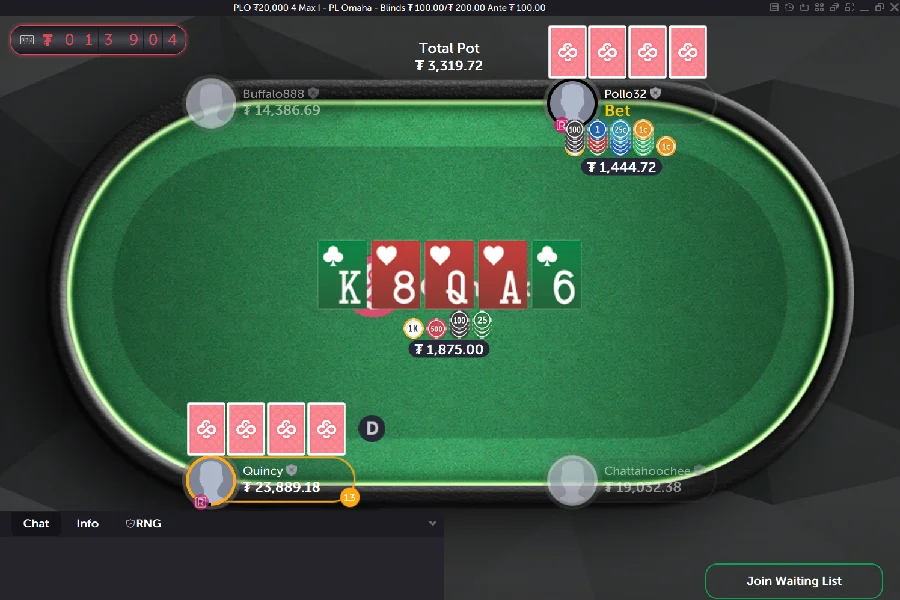
Is PLO or Hold’em Better? Here’s What We Think
Ultimately, the choice between PLO and Hold’em is down to you – and it’s okay to love both equally despite each game rewarding different skill levels and personalities.
Pot-Limit Omaha is a better game for:
- Players who enjoy plenty of postflop decisions
- Those comfortable with variance and bigger swings
Texas Hold’em is a better game for:
- Players who prefer simple game structures
- Those looking for the most player traffic and action
Whichever game suits you, we’ve got both formats running 24/7 at CoinPoker. Claim a 150% welcome bonus up to $2,000 and get paid 33% rakeback every Monday when you join thousands of poker players in Hold’em and Omaha games today.
Related Articles
FAQs
Hold’em uses two hole cards, Omaha uses four, changing hand strength, draws, and betting strategies.
Omaha has more hand combinations, bigger variance, and complex postflop play than Hold’em.
Omaha suits players who enjoy complexity, while Hold’em offers simplicity and broader availability.
Both formats run online at CoinPoker, but Hold’em has higher traffic and more table variety.
At least 30-100 buy-ins for cash games, due to variance.
Explore More
Announcements
Read recent announcements from CoinPoker about new games, ambassadors, and changes to our platform.
8 PostsGuides
The go-to resource for mastering poker with expert tips and strategies. Whether you're a beginner or a pro, our guides will elevate your skill level.
60 PostsNews
Find the latest poker news from CoinPoker, plus our latest CoinPoker Weekly and Monthly Newsletters. Updates about games, promotions and other exciting crypto news.
89 PostsPromotions
Find the latest coinpoker promotions here. Explore the crypto poker world with the best poker promotions available.
1 Post
















